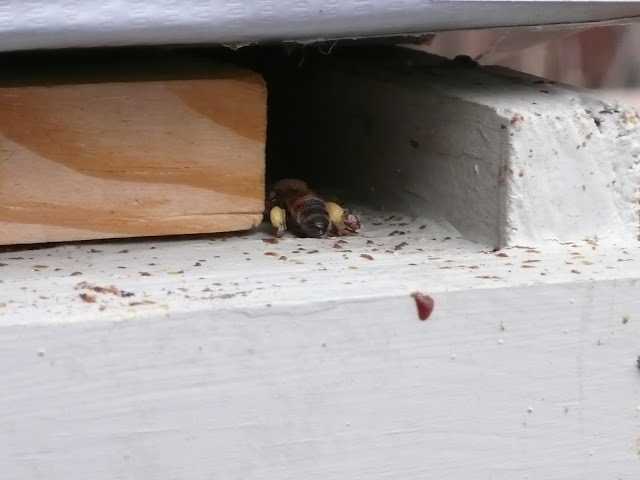I have a few areas of our lawn which are overrun with weeds. The main weed I am concerned about is black medic. Reading on the internet suggest this weed thrives in heavy compacted soil. The fix is loosening the soil via aeration. Many people in our area/region aerate via plug aerators. This is said to help roots breathe and allows water to infiltrate our clay soil better. The machines can be rented or alternatively hiring someone to do it. The going rate for the service is $50-$75. Renting a machine is in the same range.
I have a small but heavy duty roto tiller so I decided to till a strip of lawn that was overrun with weeds. I added several shovel fulls of compost to the area and incorporated with the tiller.
I am a big fan of natural remedies and have plenty of seeds saved from previous years of gardening. So I decided to sow cover crops into this area. The seeds I chose were amaranth and broomcorn. Knowing that the amaranth can get top heavy and lodge (fall over), I planted that in the center with a ring of broomcorn around it.
The slight purple tint in the center is the amaranth (Hartman's Giant Amaranth) starting to sprout. This picture was taken, June 13, about a week after tilling and sowing.
The broom corn sprouted a little slower than the amaranth.Here is a shot from July 6 (1 month after sowing).
At this point the broom corn, which is actually a type of sorghum rather than corn, is starting to overtake the amaranth.
Another month later, August 7th, (2 months after sowing)
Its all really taking off. There were a few seeds in the compost as evident by the sunflower (Helianthus) and a cucumber plant (not shown). What we discovered was the amaranth leave were getting chewed. I feel the planting density and the leaf chewing was limiting the amaranth growth.
Discovery:
There are actually three hoppers in this image. The one in the center. One to the left and down from the first. And a third, to the right of the first ringed by the yellowing leaf that is out of focus.
There were lots and lots of grasshoppers in the small patch and almost none at all in the main garden just dozens of feet away.
George, our french bulldog, loves grasshopper hunting. He eats most of them, but also enjoys playing with them. This past summer he would do this for hours each day.
As the summer progressed the plants continued to grow. George really appreciated having me or the missus flush out a couple onto the lawn for him to pounce on. He would literally eat a dozen some days.
September 3rd (3 months after sowing):
Sunflowers and amaranth seed heads clearly visible.
A couple of weeks later( Sept 13th). A strong wind blew over the outside plants:
At this point the plants were getting messy and I decided to cut everything down. I used the weed eater (string trimmer) to cut this "grove" down then ran the lawn mower over to get the rest to near ground level. I gathered up all the trimmings and moved them to the compost pile. I then ran the rototiller over the strip and sowed winter rye and hairy vetch into the area. Both of those do really well in low temperatures. Fall growth survives the winter and takes off in the spring when the temperature gets to about 40°F.
Summary:
I started with the intent of clearing a weedy area from the lawn but was really happy with the results of a "feature area" of the lawn. The grasshopper breeding area was great for George and with his help we kept them all out of the vegetable garden.



































